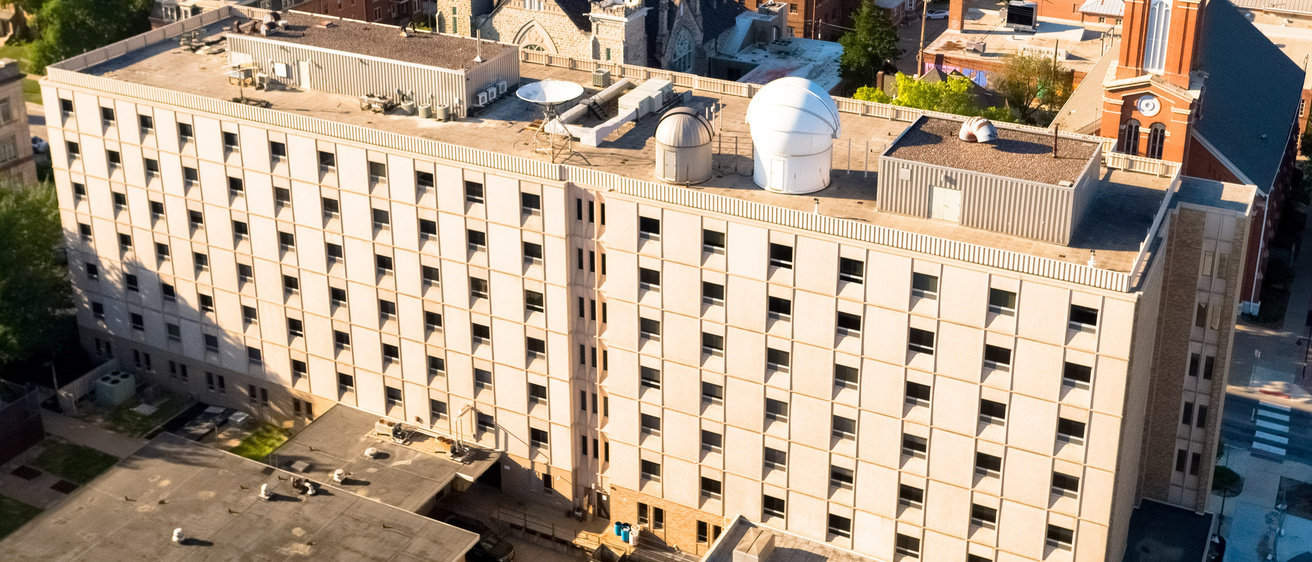Van Allen Hall continues to house physics and astronomy faculty from which James Van Allen retired in 1986. The space-age research finds expression in the architecture of Van Allen Hall. An observatory is visible above the roofline.

James A. Van Allen
1914 - 2006
Achievements
- U.S. space pioneer and Regent Distinguished Professor of Physics in the University of Iowa College of Liberal Arts and Sciences
- Taught physics in the UI physics department for decades and served as head of the department from 1951 until 1985, making it one of the most respected programs of its kind anywhere
- Earned his Master of Science degree in Physics in 1936, and a Ph.D. in Nuclear Physics in 1939 at the University of Iowa
- The highlight of his long and distinguished career was using UI-built instruments carried aboard the first successful U.S. satellite, Explorer 1, in 1958 to discover bands of intense radiation -- later known as the Van Allen radiation belts -- surrounding the Earth
- Among the principal scientific investigators for twenty-four space missions
- Retired from active teaching in 1985, but continued to monitor data from Pioneer 10 throughout the spacecraft's 1972-2003 operational lifetime and serve as an interdisciplinary scientist for the Galileo spacecraft, which reached Jupiter on Dec. 7, 1995
- In 1987, President Ronald Reagan presented Dr. Van Allen with the National Medal of Science, the nation's highest honor for scientific achievement. In 1989, Van Allen received the Crafoord Prize, awarded by the Royal Swedish Academy of Sciences in Stockholm for scientific research in areas not recognized by the Nobel Prizes. Dr. Van Allen was also was a consultant to the U.S. Congress Office of Technology Assessment, NASA, and the Space
- Studies Board of the National Academy of Sciences
- A member of the National Academy of Sciences' Space Science Board since its inception in 1958, and worked with NASA since its creation in 1959
- The University of Iowa dedicated a revamped observatory with three high-powered telescopes to professor Van Allen in 2014
- Additional information
Building Information
Street Address
30 North Dubuque Street
Year built
1964
Additional building information
